|
Despite record-breaking heat waves in the western U.S. brought on by worsening impacts of the climate crisis, the Padre Dam Municipal Water District has voted to reinstate late fees and water shutoffs for delinquent customers, many of whom are only just beginning to recover from the COVID-19 pandemic. The decision puts countless East County residents at risk of being without water during an extraordinary, and deadly, crisis of heat and drought.
On Saturday, the executive board of San Diego Democrats for Environmental Action (SDCDEA) called on the Padre Dam Municipal Water District to reverse course, agreeing the decision is exacerbating a growing environmental and social justice issue. Several SDCDEA board members called the Padre Dam Water District decision "callous." It's unconscionable that four of the Padre Dam board members would think it's a good idea to reimpose late fees, and even worse, water shut-off measures at a time when East County residents face life-threatening temperatures," said Cody Petterson, outgoing president of San Diego Democrats for Environment Action. "With this action the board has made it abundantly clear how little regard they have for the people and communities they represent." Like other water districts throughout California, the Padre Dam Municipal Water District had suspended late fees and water shutoffs for non-payment during the COVID-19 pandemic. But on a 4-1 vote earlier this month, taken at the height of a punishing heat wave and persistent drought, the district's board elected to resume late fees and discontinue water service for residents who have not paid their bills. Padre Dam Director Suzanne Till was the lone vote in opposition. Till said in the July 15th issue of the San Diego Union-Tribune, "I don't want families worrying about water during the hottest part of the year, which is August and September." Till had previously asked the board to hold off on reinstating late fees and shut-offs at least until school resumes, where children have access to water and air conditioning. The majority of the board, however, placed greater importance on recouping some of the $528,000 in outstanding monies owed from past due accounts, despite California Governor Gavin Newsom's recent announcement the state is making $2 billion in assistance available for past-due water and utility bills. Padre Dam Municipal Water District, which serves Santee, Alpine, Crest, and other East County communities, will resume charging late fees on unpaid utility bills as of Aug. 1. The district has also indicated it will resume water shutoffs for non-payment beginning Oct. 1, thereby setting the stage for an environmental justice conflict in an area of the county home to many residents and farmers struggling economically due to COVID-19 pandemic. East County resident Bonnie Price, who e-mailed the board to urge its members not to reimpose late fees and water shut-off measures, says the district could better use its resources to connect residents with the utility bill relief offered by the state, and perhaps assist residents in completing the required paperwork to access state funds. "It's the hottest time of the year. You can't have people worrying about water," said Price, who does not live within the Padre Dam Water District. "The board simply kept saying, 'We run a business here. This is a business. We can't allow people to get away with not paying bills.' It was patently obvious they're not concerned about the people they represent." Photo by Tommy Hough
0 Comments
By Richard Ram At our club's executive board retreat this past weekend, I was selected by my peers to serve as the interim president of San Diego County Democrats For Environmental Action. I'd like to thank my fellow board members for their confidence in me, and their commitment to working with me in the ongoing process of building our club into a powerhouse of passionate advocacy for environmental issues, and their commitment to working with Democratic candidates and elected officials who will champion those causes. I would like to also recognize and thank our immediate past president Cody Petterson for his tireless dedication in organizing our club meetings, doing the critical outreach to elected officials and allied organizations, and exemplifying service and leadership in ways that far too often have gone unnoticed. If you've not gotten to know me, I've been a member of the club since 2015 and began my service on the executive board in 2016 – first as director of communications, and more recently as the club's V.P. for programs and outreach. My youth was spent in Bakersfield, California, in the southern San Joaquin Valley, where I became acutely aware of the public health impacts of pollution from the surrounding oil fields and refineries, and the devastating cancer clusters that arose among children of farm worker families living near fields where they were exposed to widespread spraying of pesticides. I saw that these industries gave heavily to local Republican politicians who were completely indifferent to issues of environmental justice and the trashing of our planet, even as the residents of their districts were getting sick and dying. As I evolved into an environmentally-concerned citizen and advocate, I also became aware of how much the meat and dairy industries pollute our air and waterways, contribute heavy amounts of greenhouse gases, inflict unspeakable violence and suffering within the walls of factory farms, and use the government to lobby for ever-increasing consumption of their products by a population where the top causes of death and medical expenses are from degenerative diet-related diseases. I've been a vegetarian since 1991 and vegan since 2012, and you will often hear me speak on issues related to animals and humane legislation. While I've been a frequent contributor and member of various environmental and social justice organizations over the years, my first foray into any political organization was with the formation of a local San Diego group supporting former Vermont governor and presidential candidate Howard Dean in 2003. This was motivated by my disgust with the Bush-Cheney regime's determined, and ultimately unpopular, unilateral war in Iraq, and Dean being (at the time) the only candidate with any momentum speaking out against the war. I continued attending joint meetings of Democracy for America (DFA) and Progressive Democrats of America (PDA) for several years, where I first got to know many of the members involved with this club. I'm a graduate of San Diego State University with a degree in communication, I work in government services assisting our public, and I live in the Serra Mesa neighborhood of San Diego in a home I share with my wife, daughter, and cat. The challenges ahead are many, and we will all need to work together to address and fight for the myriad of issues we care about – in the face of special interest lobbyists and "friendly fire" often coming from our own side of the trench. With our team of energized board members and your committed involvement, I'm certain we will be able to grow and diversify our club's membership, further educate and propagate on important issues affecting our planet and its inhabitants, support committed environmentalists in getting elected to office, and continue living up to the "Action" in our club's name. San Diego Pride photo by Maria Cerda
Georgette Gómez photo by Roberto Torres By Tommy Hough
This Wednesday's San Diego County Democrats for Environmental Action general membership meeting will include an update from Encinitas Mayor Catherine Blakespear, who serves as the Chair of SANDAG, and a panel discussion on the future of the San Diego regional food system. As SANDAG chair, Mayor Blakespear has navigated an often challenging course at the nexus between coastal and environmental protection, climate action, housing, and transit. We'll hear about the environmental work that has occupied her since her last visit to the club, and the challenging road ahead. And while the COVID-19 pandemic has exposed and exacerbated the deep inequities, inefficiencies, and disarticulations of our regional food system, it has also provided a renewed impetus to collaborate to improve the quality, equity, and sustainability of food in our region. Joining us for a discussion on the challenges facing the many segments of our food system, and the most promising opportunities for transformation, are: Elly Brown Executive Director of the San Diego Food System Alliance Elly has led the development of San Diego County Food Vision 2030, released early this month, which lays out a bold plan for transforming our regional food system around matters of equity, sustainability, and resilience. Ellee Igoe Co-Founder of Solidarity Farm and the Foodshed Solidarity Farm is a regional leader in regenerative farming, agricultural carbon sequestration, food aggregation and distribution, and youth and student engagement. Mikey Knab General Manager at Ponce's, Board Member at San Diego Business for Good, National Strategy Director for RAISE High Road Restaurants A long-time friend of the San Diego County Democrats for Environmental Action (Ponce's hosted out first three club anniversary events), Mikey remains one of the region's foremost advocates for local food sourcing and rights and dignity of restaurant workers. Eric Span Director of Nutrition Services at Sweetwater Union High School District Eric has been pioneering transformative approaches to integrating schools with local farms and communities, and ensuring fresh, high quality, locally sourced meals for Sweetwater Union's students, many of whom face challenges of poverty, housing insecurity, and discrimination, and are disproportionately dependent on the district's food services. Our meeting will come to order at 6:30 p.m. You can access the Zoom link here. Click here for the Facebook event page for Wednesday's meeting. Photo by Tommy Hough By Cody Petterson
So, we did a thing today. The San Diego County Board of Supervisors voted unanimously to develop a Regional Sustainability Plan to help achieve the most ambitious climate action goal of any jurisdiction in the state of California: zero carbon by 2035. I won't even try to thank each of the thousands of people who made this happen — you know who you are — but I want to specifically thank the hundreds of people who submitted comments or showed up today and spoke. Thank you above all to Supervisor Terra Lawson-Remer and Vice Chair Nora Vargas for authoring the board letters, to Chair Nathan Fletcher for opening the breach, to Supervisors Anderson and Desmond for their support, to county staff, to our incredible District 3 team, and to our District 1 and 4 counterparts. Thank you to the voters of San Diego for casting their votes for a new direction for our county and our communities. I'm thankful above all for the opportunity to have a small hand in mending the fabric. To watch my kids playing outside, in their innocence, and be given the chance to repair their world. There will be days of sadness, frustration, anger, humiliation. Days when we're alone. But not today. Today we were together, happy, tired, mending. Photo by Bruce Bekkar By Cody Petterson
It is right that we celebrate today. That we set aside our worries, disappointments, and reservations, and celebrate our deliverance. Tomorrow, however, as we survey the wreckage left by the Trump Administration and begin to imagine how we will rebuild, and how exhausting and difficult that task will be, we should remember that the contradictions that fueled Trumpism remain — deep in our society and economy — and that they will continue to destabilize our nation until we have faced them and resolved them. The San Diego County Democrats for Environmental Action, as our name suggests, is dedicated to one thing above all: environmental action. But the calamity that Americans brought upon themselves these last four years has reinforced a powerful lesson: we will not save our open spaces, our biodiversity, our climate, without saving our communities. The only thing that returns nations to equilibrium is movement. The only thing that will meet and overcome the fossil fuel industry, the sprawl development industry, the arms industry, Wall Street — in short the enemies of life on earth — is movement. The only thing that will defeat our own personal and collective inertia and complacency is movement. And by "movement" I do not mean small groups of disaffected, self-satisfied loners, isolated from and disdainful of their neighbors and co-workers and communities. I mean movement that emerges from the concrete, lived experience of a people. To the extent that we, as activists, organizers, and advocates, can foster movement, it is through active, intimate, intentional participation in the life of our communities. Movement has no roots. It borrows our roots for its nourishment. And by "roots" I mean relationships. And by "relationships" I mean full, loving, helping, understanding, time- and energy-consuming relationships. There is no climate movement. There's not even an environmental movement, just as there are not, properly speaking, "environmental" relationships. We can no longer fight to save a canyon or a species, or stop a pipeline or a wall, and then go home to the opportunities, and advantages, and assets we have hoarded. We cannot stand against an environmental injustice with communities of color or of concern, or with our Indigenous sisters and brothers, and then let them return to their poverty and we to our prosperity. The natural system will not return to some semblance of equilibrium so long as our human communities are out of equilibrium. And human communities—our nation—will not return to equilibrium without equality. To the racial inequality that has always plagued us, we have added an increasingly obscene and insurmountable inequality of wealth and income. We have a government committed, above all else, to protecting and increasing the wealth of the wealthy. A government that over the last half century has facilitated the expropriation of half the wealth of middle-income families and its redistribution to the wealthy. Not only can that not continue, it cannot stand. We will fulfill this nation's promise of equality, or we will suffer more, and more competent, Trumps. And destroy our habitat, and biodiversity, and planet in the process. Today is not a perfect day, but it is good day. It is certainly a day worthy of celebration. After the curse of the last four years, and in spite of the hard years ahead, it is a blessing. Photo by Tommy Hough By Mia Taylor
I will forever remember election night 2016. I was sitting in a Hillcrest restaurant watching the presidential election results with a friend, when all of the sudden the tide turned. Donald Trump, the underdog, the candidate who my family and friends assured me was a long shot and would never win, was suddenly in the lead. As I continued my meal, it became abundantly clear Trump would indeed win. He would be our next president, and all the naysayers had been wrong. Thus began a four-year long, national nightmare. Like others, I tried at first to give Trump the benefit of the doubt. I listened to those who said Trump won't be as bad as we expect. That his bark is worse than his bite. That his rhetoric would fade and he would settle into the job and adapt to the norms and expectations of his new role. As we all know now, none of those things proved true. Instead it was quite the opposite. At every turn during the past four years, Trump revealed himself to be far worse than any of us could have ever imagined. With each passing day he outdid himself with even more abhorrent affronts and atrocities. He turned out to be a bigger bully, a more insidious criminal, a far more offensive racist, and a more ignorant human being than I for one ever imagined. His total lack of humanity, his complete absence of decency, his coddling of dictators and white supremacists and outright rejection of democracy and democratic norms grew more horrifying by the day. As the days, weeks, months, and years of his administration passed, the nation I grew up in became less and less recognizable. And I'm quite sure I'm not alone in that sentiment. Children in cages, separated from their parents. White supremacists, neo-Nazis, and alt-right groups marching in the streets and labeled "very fine people." Dictators putting bounties on the heads of American troops with no repercussions. The grift, the corruption, the lies ... it never ended. As someone who cares deeply for the environment and wildlife, and who lays awake at night worrying about how to save everything from wolves to wild spaces, Trump's affronts turned out to be voluminous and heart wrenching. He installed climate change deniers and individuals with zero concern for wildlife in key positions, including perhaps most notoriously, putting William Perry Pendley, a man who labeled climate change "man-made fiction" and called climate believers "kooks," in charge of the Bureau of Land Management. Pendley's selection was merely one of many, many outright attacks on the environment. Trump also weakened the EPA immeasurably and rolled back critical protections of our air and water. The environmental devastation unleased by Trump and his band of criminal cronies has been chronicled by numerous publications, but perhaps most notably in October 2020 when the Washington Post detailed the rollback of some 125 environmental safeguards. As the article pointed out: "The [Trump] administration has allowed more pollution, drilling and logging while weakening protections for animals such as bees, bears, and birds ... over the course of nearly four years, his administration has steadily loosened oversight of polluting industries, eroded protections for endangered wildlife and stymied Obama-era efforts to address the globe's most daunting environmental threat: climate change." Before Trump ever arrived on the scene environmentalists were fighting an uphill battle protecting nature and wildlife, and fighting climate change. Trump made every single one of those challenges more difficult. We now have an incredibly long road of recovery and rebuilding ahead of us. And the work will not be easy at any turn. Adding insult to injury, Trump has continued his soulless, scorched earth policy until the very last moment of his repugnant administration, including the recent announcement that this administration is seeking to develop protected desert land in Southern California, opening it to mining, energy development, and broadband infrastructure. And still he wasn't done destroying our nation on every level. In addition to repeatedly denying and lying about the outcome of a free and fair election, and seeking to manipulate and coerce election officials across the nation in order to change the presidential election results in his favor, we all watched in horror the climax of this deranged psychopath's four years in power when his supporters violently stormed the Capitol in an attempted coup. As the world watched, our once great democracy was being undone by a wannabe dictator and his band of violent, conspiracy-believing hoodlums. The Trump-inspired insurrectionists included former members of the military and active duty police, and the entire horrific event was supported and formented by fellow GOP politicians. In the end, five people died as a result to this sickening attack on our democracy, and still, it doesn't end. Trump insists he has done nothing wrong, and insists on departing Washington as a hero with full military fanfare. As a presidential candidate, Hillary Clinton received immense criticism for describing Trump's followers at one point as deplorables. In retrospect, her comment could not have been more accurate. Not only were his followers deplorable, but so were all of his cabinet appointments, and of course, the biggest deplorable of them all is Trump himself. As we watch today's inauguration of Joe Biden and Kamala Harris, there is finally light at the end of this long, dark, tunnel. Finally, this never-ending nightmare appears to be drawing to a close and we can begin to breath a collective sigh of relief. Indeed, I have been immensely heartened by the early appointments made by the incoming administration particularly the selection of Michael Regan, North Carolina's environmental chief and a former EPA air quality specialist, who will head the EPA. Regan is the first Black man to hold this role. I'm equally heartened by Biden's decision to tap Deb Haaland to run the Department of Interior, making her the first Native American to fill that role and the first Native American to serve as a Cabinet secretary. Let that sink in for a moment. Native Americans, a group of people who have suffered an abominable history at the hands of the white people in power, a history that has included being stripped of their rights and lands over the course of time, now have a major seat at the table. Finally. As one supporter of Haaland's appointment noted: "This is a deep resetting of the federal government's relationship with Native peoples, one that was built on stolen land and broken promises." A new day has dawned indeed. Make no mistake, our jobs as environmentalists are far from over. The work ahead of us is more critical and more pressing than ever. But today, as we end the Trump era and usher in a new administration, we do so with a sense of hope that has been completely and totally absent for four years. We start a new chapter led by a new administration that has already shown in a myriad of promising ways that it is acting from a place of far, far more noble and promising intentions. Photo courtesy of the White House By Tommy Hough
The happiest of New Years to you. Welcome to 2021. Earlier today, we sent a friendly e-mail reminder to a number of our members to let them know their membership with San Diego County Democrats for Environmental Action had expired at some point over the tumultuous months of 2020, or over the last several years. As the club's founding president, I can tell you it's all good and not the end of the world. Renewing on-line is easy and simple. We want you back. As our club begins its seventh year (!), our volunteer organization is working on a more efficient and streamlined renewal process for members. And we wanted to give our expired members the opportunity to renew their membership as part of our club's New Year renewal effort. If you're one of the lapsed members we contacted either by phone or e-mail, or both, the easiest way to do this is by going to our website and renewing your membership there. If you haven't renewed online, it's easy – but it may look a little different. Our club no longer uses Paypal to process payments. We now use a service called Wild Apricot, and to process a renewal online you may need to "start from scratch" and create a profile with the club, or find a pre-existing membership profile for you. This profile includes fields for needed bits of information that you would typically fill in on a paper application form. As a political organization with specific state and federal guidelines we're required to adhere to, we need these particular bits of information (e.g., your occupation, etc.) for reporting purposes. If you like, you can still mail a check and membership form the old-fashioned way to our Normal Heights post office box: San Diego County Democrats for Environmental Action P.O. Box 16254 San Diego, CA 92176 Whether you're a new member or a renewal, please include a completed membership form with your check so we have the most up-to-date information for you for our legally-required reporting purposes. We all hope to be at a place where we can return to in-person meetings, but in the interim renewing your membership online, or sending a check to our P.O. box, will be the easiest way to keep your membership current that not only enables you to vote on club matters, but gives you a voice in one of the biggest and most influential affinity clubs within the San Diego County Democratic Party. As the 2020 election cycle recedes in the rearview mirror, new campaigns and contests will begin to take shape ahead of 2022 over the next several months. Your membership with San Diego County Democrats for Environmental Action ensures you have that vote, and voice within the club, along with and a steady stream of related environmental news. And as we've demonstrated with your help over the last seven years, our club sticks by its founding principles of holding elected officials and candidates accountable as we promote, and defend, policies relating to climate, land use, energy, wilderness, parks, species diversity, habitat, wildlife, transit and transportation, housing, environmental justice, clean air, clean water, and more. Plus we like to get out for hikes and visits to places like the California Wolf Center or the city's Pure Water facility, in between club meetings and issue-driven environmental reports. Let's get you "back in the fold" with the club in 2021. Go to our website to renew your membership today – and thank you for all your support over the years we've been together. We look forward to gathering again in person soon. Photos by Tommy Hough 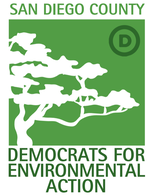 By Tommy Hough and Rick Guerrero San Diego County Democrats for Environmental Action hosted our first Environmental Report on the environmental impacts of the Border Wall this past June, when our panel discussed legal efforts to stop the wall and its effect on ecosystems, watersheds, wilderness, and species in San Diego County where the wall passes through the Jacumba Mountains Wilderness and Otay Mountain Wilderness just east of Chula Vista. Now, as mountaintops are being blown apart with high explosives atop Indigenous burial grounds along the border in Arizona to facilitate even more miles of pointless wall construction, the question of how and when our ecosystems and cultural sites will cease being desecrated and destroyed goes to the incoming Biden administration, which has offered no indication any current contracts signed for wall construction will be cancelled or even reconsidered after the 46th president is inaugurated. Our club's second Environmental Report on the Border Wall and its related impacts is this Wednesday, Jan. 6th, via Zoom. We'll hear from Kristie Orosco, a member of the San Pasqual band of Mission Indians and the larger Kumeyaay Nation who is a graduate student at the Scripps Institution of Oceanography, and a guest lecturer at USD, San Diego State, and Cal State San Marcos. Kristie will discuss the native biodiversity at stake along our borderlands with the wall's ongoing construction, and the Trump administration's outright dismissal of environmental requirements and National Environmental Policy Act (NEPA) requirements in doing so. We'll also hear from Dan Millis from Sierra Club Borderlands and see a portion of their presentation on the Border Wall, and its related environmental impacts throughout the southwest along the border with Mexico heading into the Sierra Club's National Day of Action on the Border Wall on Saturday, Jan. 9th. As part of our meeting we'll also get an update on the Binational Friendship Garden of Native Plants and Friendship Park from Daniel Atman with Sierra Club Borderlands, who spoke at our June meeting. A question and answer forum moderated by club board members Rick Guerrero and Tommy Hough will follow presentations from all three speakers. Join San Diego County Democrats for Environmental Action this Wednesday, Jan. 6, via Zoom at 6:30 p.m. for our second Border Wall Environmental Report via Zoom. Banner photo by Daniel Watman
Footer photo courtesy of Russ McSpadden and the Center for Biological Diversity By Cody Petterson
Regarding today's vote for San Diego City Council President, I'm going to spare all of you the dozens of pages I've written and rewritten over the last several weeks, and simply point out that this is the most consequential environmental vote that this Council will cast for the foreseeable future. One of the Councilmembers-Elect told a delegation the other day that whomever they voted for, they were still going to fight for a robust environmental and progressive agenda. The statement is self-evidently disingenuous. The vote for council president is about setting the agenda, literally and figuratively, and it is absurd to claim that one is committed to prioritizing environmental and equity concerns while casting a vote that commits the Council to an agenda that is at best indifferent to them. This vote will determine whether efforts to protect our environment, confront the climate emergency, and foster a more equitable society face a head wind or a tail wind. It is a vote that will impact hundreds of other votes. It will have enduring consequences for our environment, and for the political futures of the voting councilmembers. As it should. It is a vote that everyone now engaged in San Diego politics will remember, regardless of where they stand on the political spectrum, just as we remember, and in many ways are still living with the consequences of the Alvarez-Cole vote. The Chamber of Commerce and the BIA will remember. The POA will certainly remember and attempt to impose consequences, precisely because its leadership believes it will have persistent consequences for its members. But so too will the hundreds of organizers, activists, civic leaders, and the dozens of civil society organizations on the other side precisely because of, and in proportion to, the consequences they believe it will have for the environment, equity, and justice. That is good. Consequences are good. The political consequences of a vote should be directly proportional to the magnitude of their impacts on the things we value. On our lives. On our families. On our world. That is the essence of a genuine politics: to take responsibility for the broader consequences of one's decisions and actions, and to accept and weather the electoral and political consequence for oneself. Toward the end of his life, German sociologist and political economist Max Weber said, "It is immensely moving when a mature person—no matter whether old or young in years—is aware of a responsibility for the consequences of their conduct and really feels such responsibility with heart and soul. They then act by following an ethic of responsibility and somewhere they reach the point where they say: 'Here I stand; I can do no other.' That is something genuinely human and moving. And every one of us who is not spiritually dead must realize the possibility of finding themselves at some time in that position." The Councilmembers will find themselves on the dais this afternoon in precisely such a position, some of them for the first time. May they think first and foremost of the consequences of their decision for our communities and our environment. May they always put the common good highest. Peace. Photo by John Loughlin By Tommy Hough with talking points courtesy of Frank Landis As reported in the San Diego Union-Tribune this weekend and detailed in our club's Dec. 7th Action Alert, the California Department of Fish and Wildlife acquiesced to pressure from San Diego County to exchange, or "swap," portions of the biologically valuable and previously protected Rancho Jamul Ecological Reserve for parcels within the notorious Otay Ranch Village 14 development, which our club took an official stand against last year. In other words, at the behest of developers, the county wants to swap out portions of the Rancho Jamul Ecological Reserve for less biologically-valuable areas in order to BUILD on the reserve. And they're using a sympathetic audience at the state level to make it happen. That this is occurring in California, and in San Diego County, is unconscionable. We need your voices.
The vote will take place during tomorrow's special meeting of the California Wildlife Conservation Board at 8 a.m. We need you there, and we need you to make comments. To speak at the meeting, fill out a speaker form NOW and submit it via e-mail to Wildlife Conservation Board staff member Mary Ahern at [email protected]. You'll want to make remarks regarding Item 3 on the agenda ("Rancho Jamul Land Exchange"). To dial into the meeting tomorrow (Tuesday) morning at 8 a.m., call (916) 535-0984, and use the phone conference I.D. of 871 789 882, followed by the pound sign. To access the meeting via the web, click on the "Join Microsoft Teams Meeting" link on the agenda PDF and select an app or choose the "continue on this browser" option. If you can't call in, e-mail and request that the board reject the proposal. Send your note to Wildlife Conservation Board director John Donnelly at [email protected]. Below are two sets of talking points, one from Frank Landis, and one from Renée Owens, that you can draw from for your remarks. The e-mail template you can copy and paste into a note to the board is available below. Sample E-Mail Send this note in immediately to Wildlife Conservation Board director John Donnelly at [email protected] so it can be distributed to board members as soon as possible. Dear Members of the Board, I oppose the Rancho Jamul Land Exchange (Item 3 on the Dec. 8th agenda), because it would set terrible precedents for all our public lands. It violates state statutes and California Department of fish and Wildlife (CDFW) guidelines because it would trade endangered species habitat for land that will not support the affected species. It would also "double count" already protected lands and lands used for mitigation. When the the Wildlife Conservation Board (WCB) buys land for "permanent protection," the public must be able to rely on this promise that conserved means conserved in perpetuity, not set aside for future development. Please don't approve this exchange and violate the very safeguards meant to protect our public lands. Thank you for taking my comment. Sincerely, [ YOUR NAME ] Talking Points from Frank Landis Remember, this is not a one-off case, and it sets a terrible precedent. If the board caves on this, there will only be more of theses cases. Trading off known endangered species habitat for a short-distance wildlife corridor that doesn't include the endangered species at risk in the first place is a terrible trade – and illegal to boot. If the Wildlife Conservation Board and related agencies stand together with allies in the environmental community rather than breaking ranks, the case for overturning the project grows. The land swap only looks good if one assumes the developer will win the litigation. The new, majority-Democratic San Diego County Board of Supervisors will likely have to hear at least part of this case again if the Wildlife Conservation Board doesn't approve the deal. That the California Department of Fish and Wildlife succumbed to pressure from the County of San Diego and agreed to exchange portions of the biologically valuable, and already protected, Rancho Jamul Ecological Reserve for parcels within the Otay Ranch Village 14 area has facilitated the development, and was central to its approval by the Board of Supervisors. The ecological reserve was initially purchased with public funds for "permanent preservation." State Law requires that ecological reserve lands can only be exchanged for lands of equal or greater value. Unfortunately, the CDFW's own analysis demonstrates that the land being offered is inferior to what is being given up. The parcel that's been given up supports the endangered Quino Checkerspot Butterfly, among other species, and the exchange parcel lacks the soil and vegetation needed to support Quino Checkerspots. Therefore, this swap also violates CDFW guidelines in prohibiting loss of endangered species habitat. Attempting to justify the exchange, the CDFW is double-counting as benefits lands already protected by the Multiple Species Conservation Program (MSCP), and lands that would be used as project mitigation. And that outcome would transfer development into the middle of a wildlife corridor – that is completely unacceptable. This exchange would set disastrous precedents for all public lands, as it means that all ecological reserves are potentially under threat and are simply placeholders if the right political pressure is applied to the CDFW. If the land exchange is denied, better solutions can be achieved, because the incoming Board of Supervisors will have to hear at least some part of the project again. Banner photo courtesy of the San Diego Natural History Museum
Footer photo courtesy of Earth Discovery Institue |
Green Thoughts
The blog component of San Diego County Democrats for Environmental Action welcomes content from SDCDEA members, guests and leadership. Archives
October 2023
Categories |
Social Media
Quick Links |


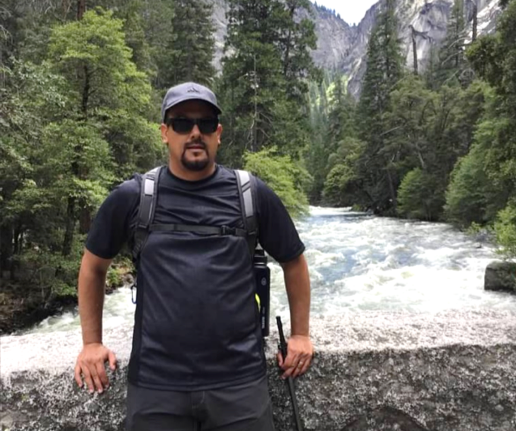
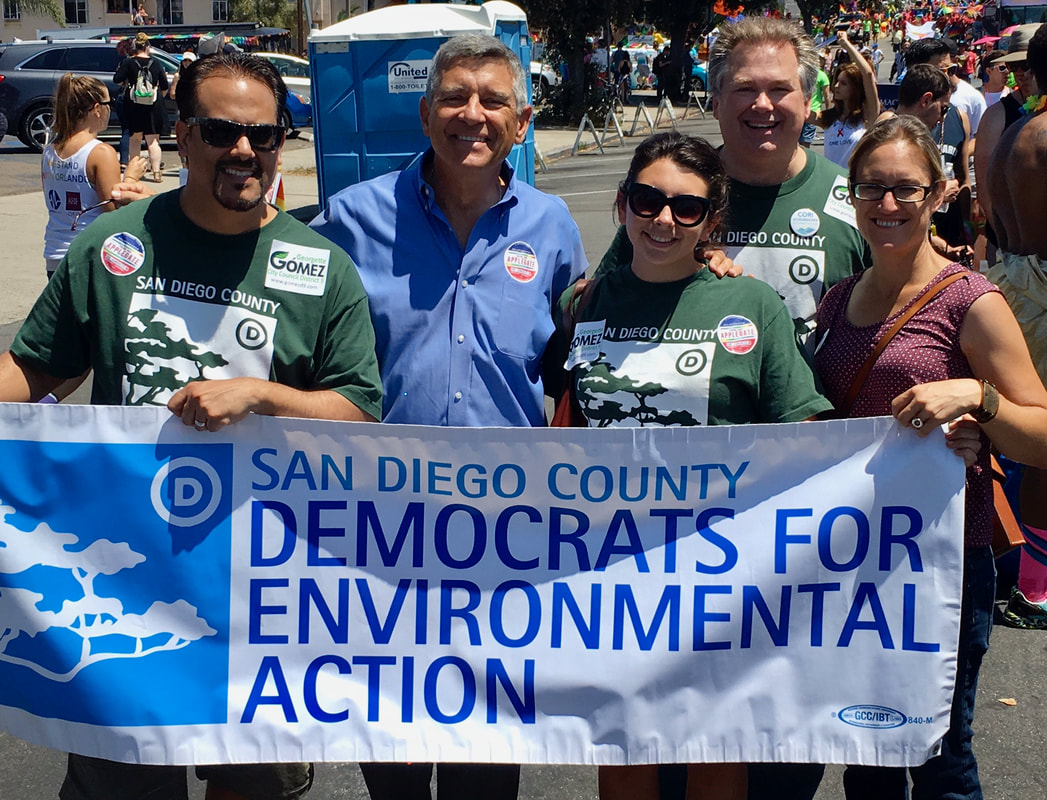


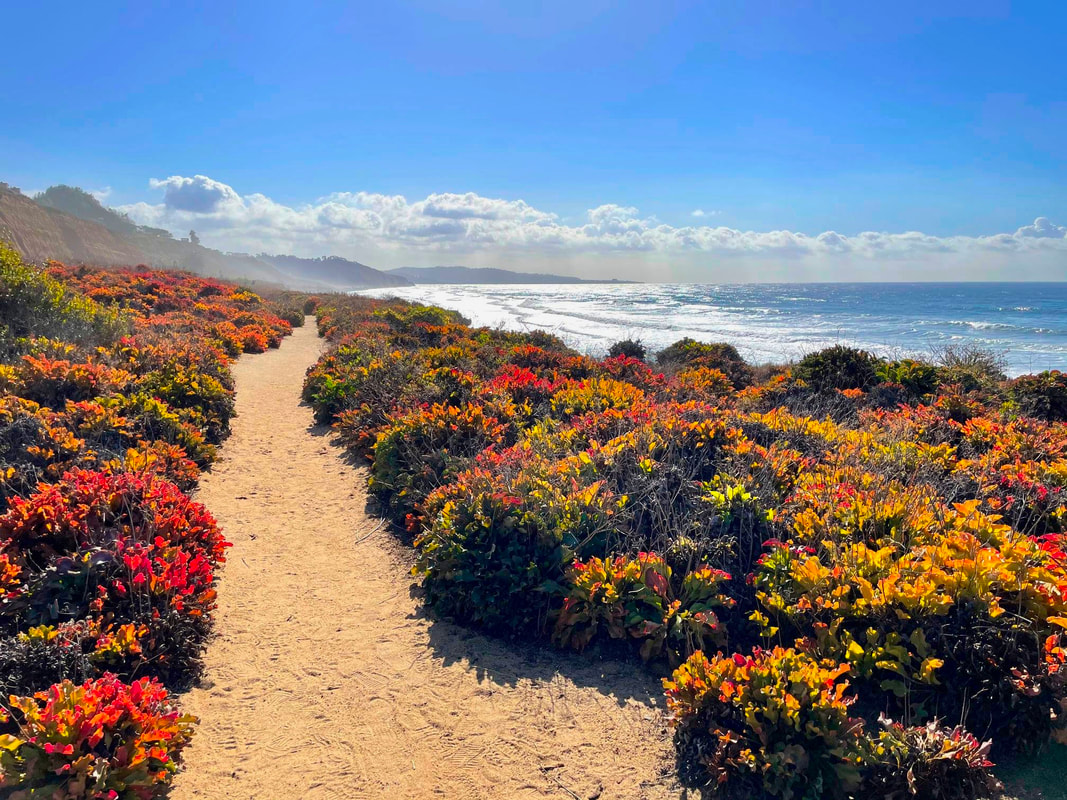
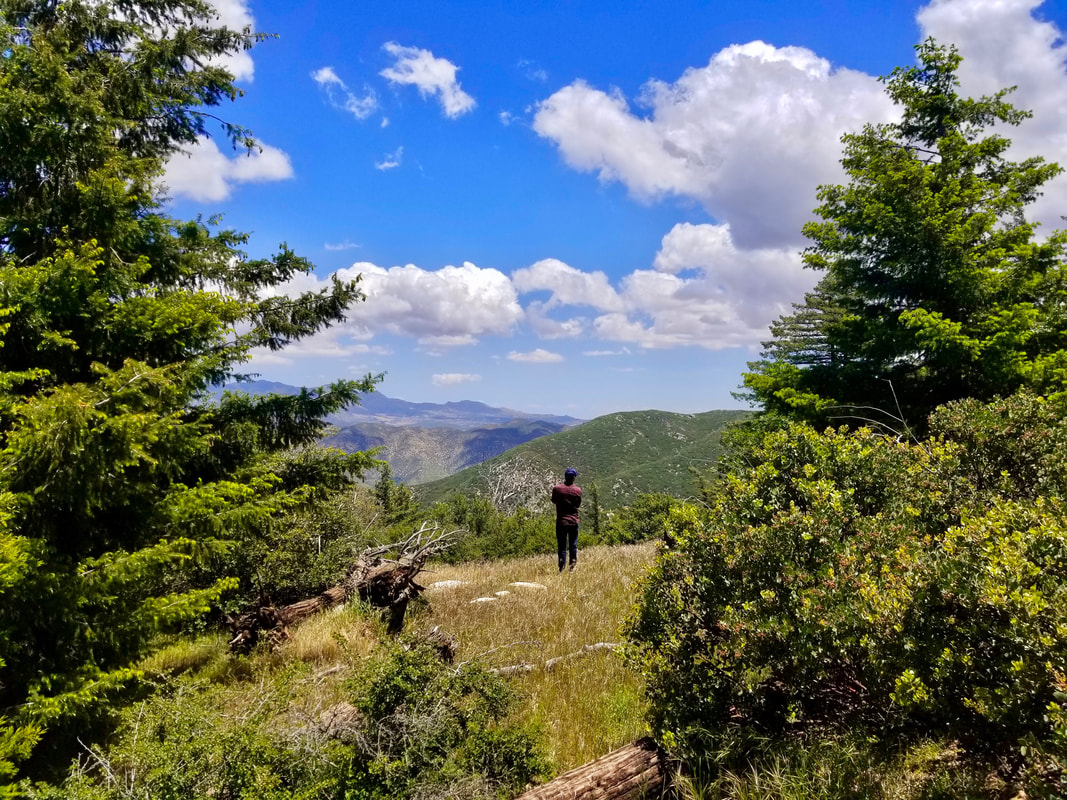


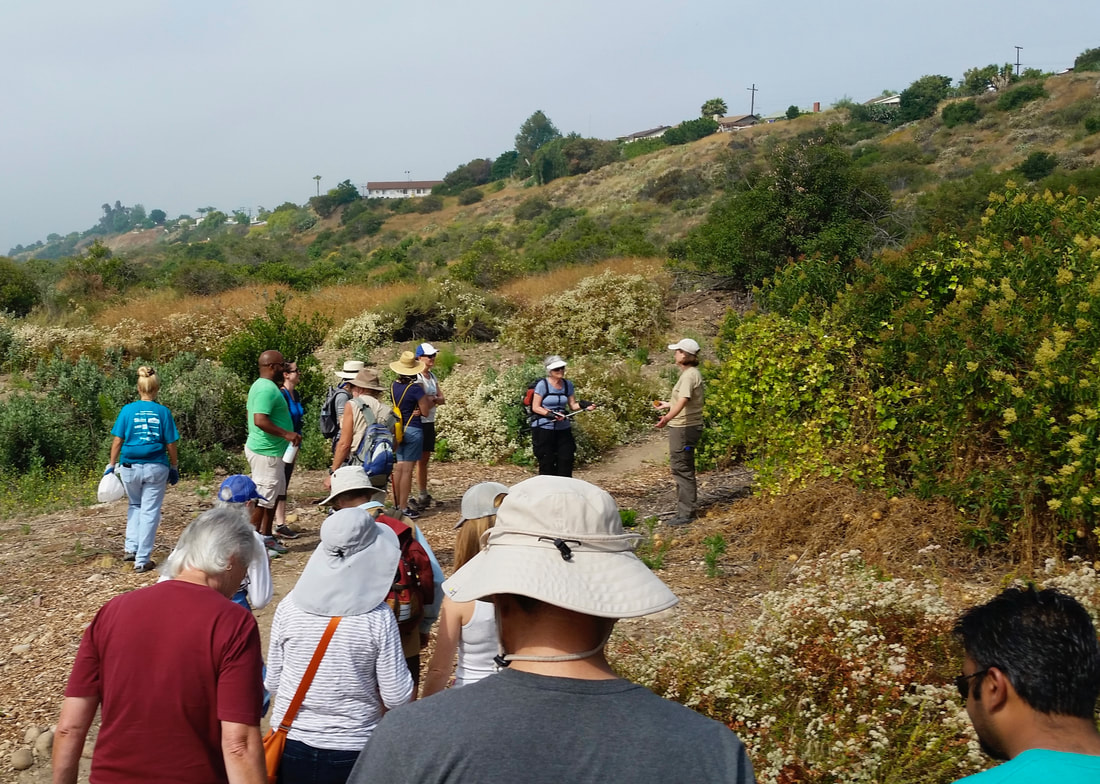


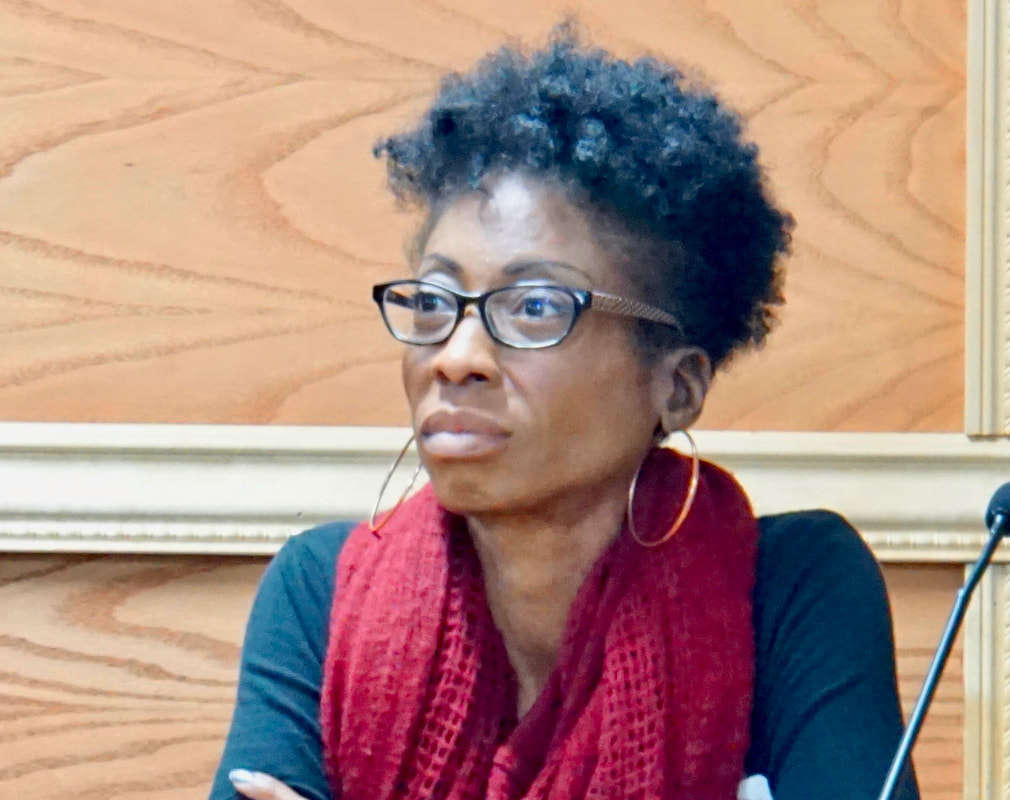

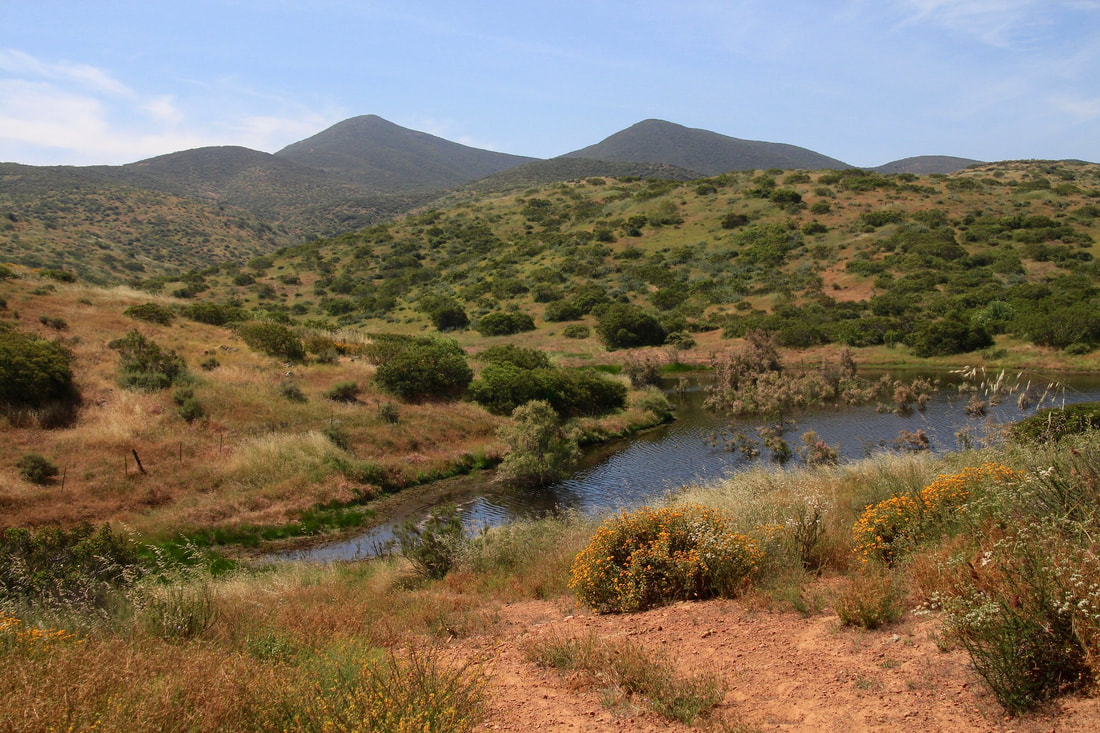
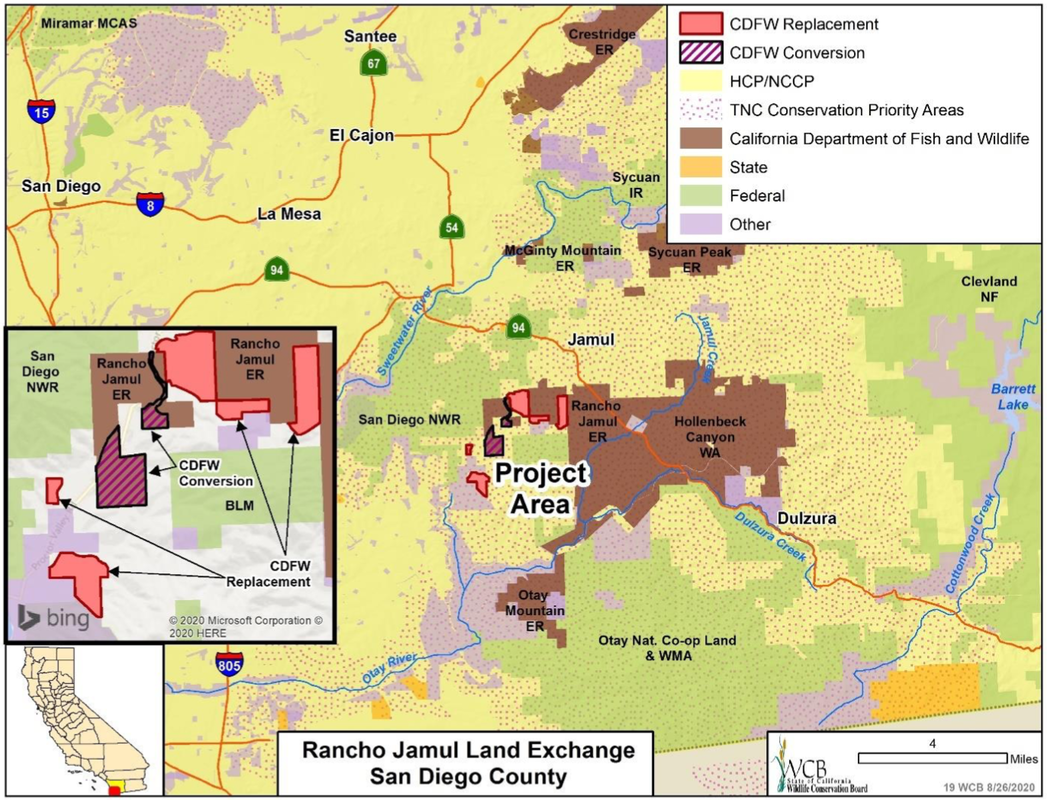
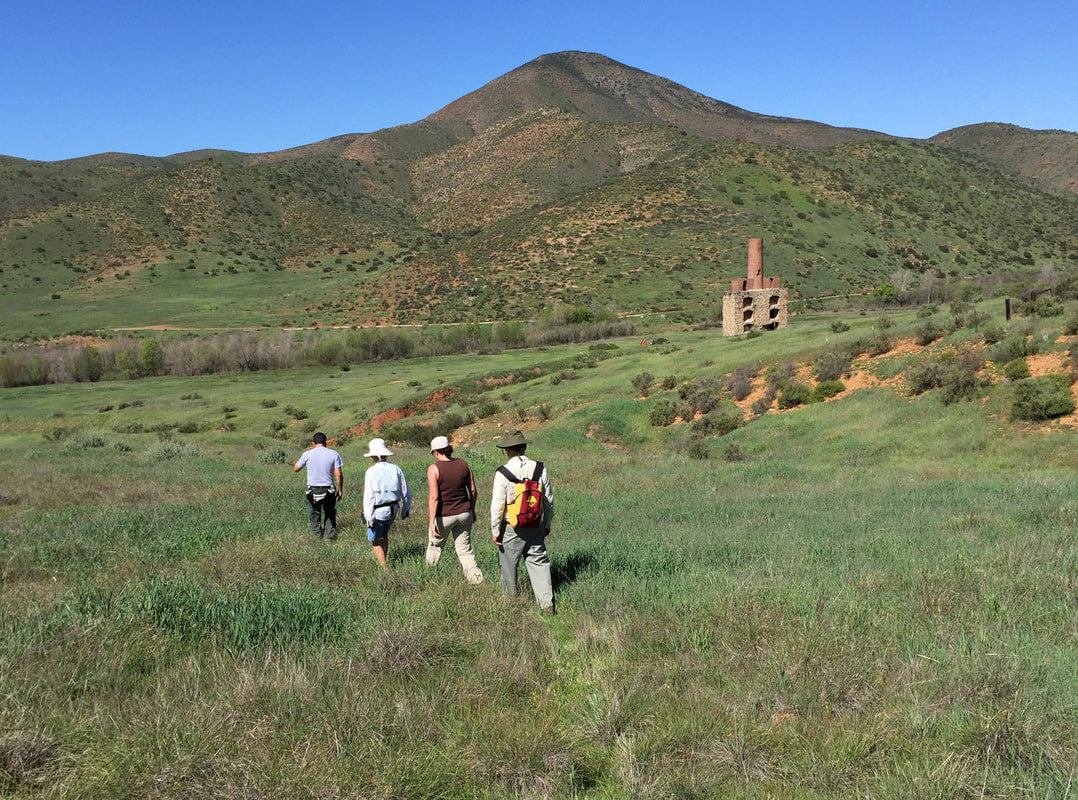
 RSS Feed
RSS Feed

